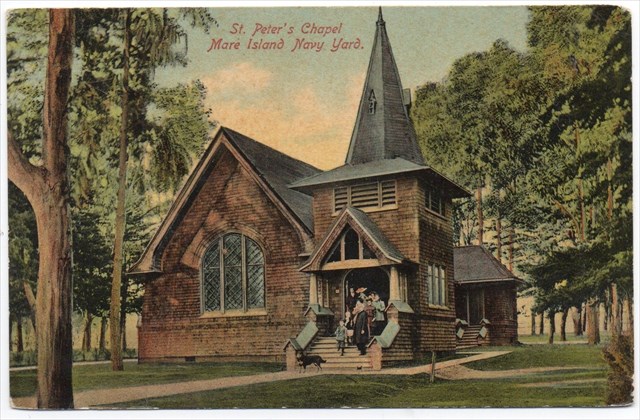Instructions for the "Vallejo Historical Landmarks GeoTrail"
1. Obtain a VHLGT Passport. You can pick one up in person at either the Vallejo Visitors Bureau, 289 Mare Island Way or the Vallejo Naval and Historical Museum, 734 Marin Street. Current hours of operation are listed on GC65Y05: VHLGT Trailhead.
2. When you find a VHLGT geocache, sign the log and record the code word specific for that Landmark(s) on your passport.
3. Share your experiences online when you get home. Log into your geocaching.com account and track all of the caches you’ve found. Let us know in your log if you’re a first time visitor to Vallejo.
Limited Edition Geocoin
• Find at least 16 Vallejo Historical Landmarks GeoTrail geocaches (passport with code word recorded) and receive a free Visit Vallejo geocoin. (Only one geocoin per household or team.)
To Obtain Geocoin
• After finding the caches, each team will be required to stop by either the Vallejo Visitors Bureau or the Vallejo Naval and Historical Museum to have their code words verified. Coins will not be mailed. Please consider hours of operation when planning your visit.
* Geocoins are available while supplies last.
About This Architectural Historical Landmark

St. Peter's Chapel came into being through the efforts of Chaplain Adam A. McAlister. McAlister was chaplain in the U.S. Navy from 1873 to 1909 and is buried in the cemetery at Mare Island. McAlister commissioned San Francisco architect, Albert Sutton, to develop a "plan and specifications for a Chapel at Mare Island." The same notation indicates he paid Sutton $50 for his services and that he forwarded Sutton's plans to the Navy Department for approval. The plans were forwarded to Washington, D.C. on November 30, 1900 and the chapel was completed and first services conducted there on October 6, 1901.
The art glass windows and many of the furnishings were added over the next decade. One of the earliest chapel expenses includes payment to a Philadelphia firm for colored paper to cover the windows, to simulate stained glass. Little by little, however, the art glass and furnishings were paid for through private donations. The windows were dedicated in memory of U.S. Navy personnel, typically by family members. It appears that all but two of the windows were in place by the time of McAlister's funeral services in St. Peter's Chapel in 1916. St. Peter's is the second oldest chapel owned by the Navy, the oldest on the West Coast, and the oldest inter-denominational chapel owned by the Navy.
Albert Sutton was born in British Columbia on June 6, 1867. After attending public schools in Portland, Oregon he completed his education at UC Berkeley, graduating in 1894. He is first listed in the classified section of San Francisco City Directories as an architect in 1896 and when licensing of architects came into effect in 1901, Sutton was one of the first groups to apply. His certificate number was A36. In 1903 Sutton took on a partner, Charles Peter Weeks, who had studied at the Ecole des Beaux-Arts in Paris. In 1912 he joined architect Harrison A. Whitney in the firm of Sutton & Whitney. Together they became one of the leading architectural firms in Portland, designing several important commercial buildings. They opened a second office in Tacoma, Washington, which Sutton supervised. Sutton died of a heart attack in Tacoma in November of 1923.
Louis Comfort Tiffany is best known for his work in stained glass and is the American artist most associated with the Art Nouveau movement. Tiffany was a painter and interior decorator and designed stained glass windows and lamps, glass mosaics, blown glass, ceramics, jewelry, enamels and metalwork. Louis, born in 1848, was the son of Charles Lewis Tiffany, founder of Tiffany and Company; and Harriet Olivia Avery Young. At St. Peter’s Chapel, the windows follow a plan presumably conceived by Tiffany, with different sizes and shapes of windows on the sides of the nave, in the apse, and at the façade. The imagery also follows a deliberate plan. The side windows, set in groups of three, typically include images of saints on either side, with an image of the Madonna, Jesus, or Joseph in the center. The rose window in the sanctuary includes an image of the ascendant Christ. Three of the remaining windows in the sanctuary include Sir Galahad and two archangels. A pastoral view dedicated to Chaplain McAlister is the fourth large window in the sanctuary. The façade triptych tells the story of Simon, called Peter, for whom the church is named.